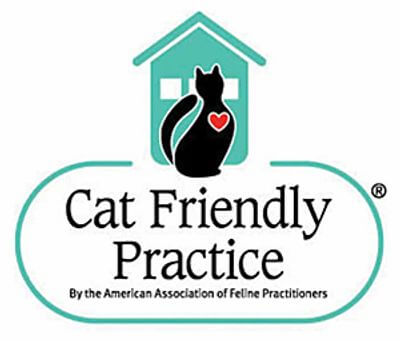From detecting intricate bone structures to revealing the minutest of tumors, CT scans enable us to make more accurate diagnoses and provide targeted treatments for your unique pet. Let’s take an in-depth look at Computed Tomography, majorly known as CT scans, and bring you closer to the forefront of veterinary diagnostics.
As a veterinarian, I have witnessed firsthand how this cutting-edge technology has revolutionized our approach to pet healthcare in many cases. While it may seem similar to traditional X-rays, a CT scan offers unparalleled detail, opening new windows into the internal workings of our animal patients. Let's explore this diagnostic tool together.
The Power and Value of CT Scans in Veterinary Care
CT scanning in veterinary care marks a huge leap in diagnostic capabilities, closely mirroring the advancements seen in human medicine. A CT scan captures over 3,000 images as the machine encircles your pet, compiling them to provide a comprehensive internal view. It's like having a full map of your pet's internal structure, offering previously unattainable clarity.
In veterinary medicine, CT scans are particularly valuable for intricate cases, such as identifying deep-seated ear infections in cats or planning surgical interventions for abdominal masses. This tool enhances the accuracy of diagnoses and guides us, as veterinarians, in developing more effective treatment plans.
.jpg)
What Pet CT Scans Can Reveal
Their ability to provide detailed, cross-sectional images makes them ideal for examining various parts of a pet's body:
Cranial Structures
We find CT scans particularly invaluable for examining pet skulls, especially in cases of chronic respiratory or ear issues in cats. The level of detail allows us to see deep into the middle ear and beyond, identifying issues like lesions, polyps, or infections.
They are also increasingly being used in oncology for tumor detection and staging, helping to map out the most effective treatment protocols.
Abdominal Views
Abdominal issues are another area where CT scans shine. They are instrumental in evaluating masses or abnormalities within the abdomen, helping us with precise surgical planning. This advanced imaging allows veterinarians to be well-prepared before undertaking complex surgeries, increasing the likelihood of successful outcomes.
Bones
CT scans are helpful in orthopedic assessments, particularly for pets with joint or bone disorders. They provide clear images of bone structures, aiding in diagnosing conditions like hip dysplasia or fractures. As in the abdominal views, the level of detail offered by CT scans helps in planning orthopedic surgeries or treatments as well.
Emergency
In cases of trauma or accidents, CT scans rapidly assess internal injuries, leading to more immediate and effective treatment plans.
The CT Scan Procedure for Pets Explained
We will be with your pet every step of the way during their evaluation. Leading up to your pet’s scan, typically, you'll need to withhold food from your pet for 12 hours, water is fine. An empty gut is preferable for abdominal scans, and in some cases, an enema may be necessary.
During a CT scan, pets undergo full anesthesia for a smooth, stress-free experience. The scan itself varies from five to 20 minutes, depending on the area being examined. Post-scan, pets are usually a bit drowsy but generally return home the same day without lasting effects. This non-invasive procedure allows for a quick recovery to normal activities!
Expert Analysis
When it comes to interpreting the results of a CT scan, veterinary radiologists play a big role. These board-certified specialists, trained extensively in reading and understanding complex imaging results, can be the unsung heroes behind accurate diagnoses.
After a CT scan is performed, the collected data, comprising thousands of detailed cross-sectional images, can be sent to a veterinary radiologist. These experts analyze each image, looking for anomalies that might indicate underlying health issues. Our in-house team can assess and plan immediate action for simpler scans, like dental evaluations.
.jpg)
The Costs
Understanding the financial aspect of veterinary CT scans is important for pet owners. The cost can vary widely based on factors like clinic location, the complexity of the scan, and the specific veterinary facility. It's common for these scans to be a big investment, so it's best to be prepared!
Given the potential for variation in pricing, getting an estimate from your veterinarian is really important. This estimate should detail all associated costs, including the scan, anesthesia, and any additional tests or follow-up care that might be needed. By asking for an estimate, you can make informed decisions about your pet's health care while managing your budget effectively. Always feel empowered to discuss financial concerns with your veterinarian; they understand the importance of transparency and can often provide options or alternatives to suit different budgetary needs.
Embracing Advanced Diagnostics with Veterinary CT Scans
For pet parents, understanding the value and capabilities of CT scans can be incredibly empowering. It means being better informed about your pet's health and more involved in their care. They allow us to detect issues early, plan surgeries with confidence, and tailor treatments to each pet's unique needs. This improves the quality of care we provide and enhances the bond of trust between veterinarians, pets, and their owners.
In the ever-evolving world of veterinary medicine, CT scans represent a significant stride forward. They remind us that at the heart of every technological advancement is a commitment to improving the lives of our pets.
If you have questions and you'd like to reach out to us, you can call us directly at (603) 287-1181, or you can email us at [email protected]. Don't forget to follow us on social media Facebook, Instagram.



